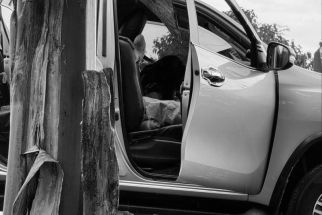4 decades of setting the trend of 21st Century Education for K to 12
(Part II)
The Preamble of The UNESCO Constitution states, “War starts in the minds of men, therefore, the defense of peace lies in education.” For this reason UNESCO has consistently emphasized the need to innovate, re-engineer, transform conventional education to match the in-born potential of childhood.
The 45th year celebration of the Operation Brotherhood schools marks an extensive chain of opportunities that has made this non-stock non-profit educational operation a trend setter in implementing “the 21st Century Education” almost four decades before UNESCO labeled its new millennium education as such.
‘21st Century Education,’ offspring of the ‘Century of the Child’
Dr. Maria Montessori has gifted mankind a scientific system, which she claims is not at all her invention but an educational formula, which the children themselves have shown her as early as 1905, in an experimental school at the poor district of San Lorenzo in Rome. The first lady physician of Italy, she observed that given a well-equipped classroom, preschoolers had an absorbent mind that could be conditioned to love work and order. Thus, she discovered these “new children” together with the “new teachers.” Recognized as one of the education pioneers of the century, who introduced “Early Childhood Education” together with adult literacy to UNESCO in 1946, when the UN Agency was established in Paris, the United Nations declared the 20th century as “The Century of the Child.”
Within the next 50 years into the new millennium, it led to UNESCO championing the 21st Century Education indicating its Pillars: learning to be (0 to 6 years old), learning to learn (6 to 12 years old), learning to work (12 to 18 years old) and learning to harmonize with others (18 to 24 years old) matching the four stages of human development. Dottoressa Montessori meantime had already shown its psychological basis and how the system could work.
The first decade 1966-1976 learning how to be, speaking English, enduring martial law
This first decade of Operation Brotherhood from 1966 to 1976 was full of excitement trying to introduce Montessori as an alternative system of education to the public, to make sure it would not be underestimated nor overestimated. With another Italian Borsa di Studio (scholarship), I went back to Italy in 1968-1969 to take the advanced training course for Montessori elementary school teachers in Bergamo, birthplace of Pope John XXIII, a city close to Milan.
Trusting the adage, “seeing is believing,” I managed to convince Genie Lopez Jr. that I could get enough sponsors, if ABS-CBN would let me host a weekly program “Montessori for Everyone.” A trial film was done and although I appeared so stiff, the intro Italian mandolin music of “Carissimo Pinocchio,” accompanying the visuals of fetal development, and my preschoolers charmed him. He gave me the contract to air it live every Saturday with Tuesday and Thursday repeat bonus.
The audience was dazzled by what appeared as a “revolution in education.” The classroom had no blackboard, workbooks or toys just four open shelves filled with materials. With precision, Teddy, a four-year-old preschooler wearing an apron, showed the four steps of “Practical Life” sweeping the floor. Carolina concentrated on the 13 steps of laundering hankies, while five-year-old Bobby and Sylvia, also wearing aprons, efficiently set the table with placemats, breakable plates and glasses.
I never ran out of activities the whole two years using the Sensorial apparata with color, sandpaper tablets, geometric cabinet, sound and smelling boxes, universally-tested materials patterned from original samples of the didactic materials from Nienhuis, Amsterdam and Gonzaga, Italy. The Math Art series contained the golden decimal beads introducing units, bars of tens, hundred squares and the cube of a thousand, easily worked on even by the three-year-old. The difficulties of Writing and Reading were graduated by learning sounds with Sandpaper Letters, “composing words” with the movable alphabets, reading baskets, Grammar Games with a dollhouse, etc.
Threes and fours worked first with the seven-piece puzzle map of the world, then the 27-piece map of Asia and corresponding flags. The children also matched the botany and zoology nomenclature cards. It was evident that given this room full of materials, preschoolers could understand clearly all elementary school subjects, so when they would step into formal first grade they would have acquired the competencies of a third or even fourth grader.
Max and Ninoy on TV Impact show hastens declaration of martial law
“Montessori for Everyone” was beamed in all the ABS-CBN channels all over Luzon, Visayas and Mindanao at noontime after the Ariel Ureta show. It rated among the top 17 among 400 shows, popular among A, B and C viewers. Since I hosted the whole show in English simultaneously translated into Filipino, I caught the larger viewer of class B and C. The last show in 1972 included the two sons of Macario Laurel.
By strange coincidence, my husband Max was hosting the talk show IMPACT every Saturday evening. His last show featured Ninoy Aquino revealing Operation Sagittarius, the secret Marcos plan to declare Martial Law. Thus, it was prematurely declared. Max and Ninoy were arrested. ABS-CBN was padlocked for the next 14 years.
The 2nd decade 1976-1986, learning how to learn
I made sure that we would use English as a medium of teaching starting with preschool. Their Absorbent Mind that works like a camera took to English easily. For teachers and students, the motto became “English 24 hours a day.”
Dr. Ethel Valenzuela’s survey (see Part I) noted that English and the local language is simultaneously used in Brunei, Malaysia and Singapore from preschool to highschool, but in the Philippines English is only taught in the intermediate grades. Instead the local dialect is used from preschool to third grade. The MLC or “The Minimum Learning Competencies” underestimates the competence of Filipino children, believing that they are incapable of speaking English unless they are older. If our 156 Pagsasarili preschoolers all over Luzon can speak English, why can’t all the others? Teachers should be obliged to speak English constantly, while treating the national language Filipino as a subject.
Based on the Comparative Study of the education in Singapore, Malaysia and Brunei Darussalam, Dr. Valenzuela recommended the first task would be to anchor the Philippine educational goals on the development of 21st Century Education, not just functional literacy. The second task is streamlining and integrating the content of compulsory subjects, which are overcrowded in the Philippines. This has prevented the mastery of concepts and skills. Suggestion has been made for a “spiral” progressive curriculum that would link learning from elementary school to high school.
How do we help the mind of the child to become fixed, to stop wandering in an aimless quest for knowledge? Mankind thrives within the Cosmic Organization. Man’s basic need for food, clothing and shelter comes from the Biosphere, which is the life from the land (lithosphere), from water (hydrosphere) and the air (atmosphere). “Man and the Biosphere” is the major theme of UNESCO to remind mankind of his responsibility to conserve the Cosmic Organization with its Animal Kingdom, Plant Kingdom and Mineral Kingdom, otherwise people will not be able to survive.
Effective learning starts with a general concept before going to the particular. Elementary school curriculum should first be introduced with the pictorial “Time Line of the History of Life” instead of going straight to Philippine History. Major cities in the world have a Natural History Museum depicting the Paleozoic Era (first life was found in water), the Mesozoic Era (when reptiles emerged “in middle life”) together with plants, and Cenozoic Era (evolution of birds, mammals and man). This should be followed with the “Timeline of Man”: Paleolitic, Neolitic, etc. showing his tools for planting, housing, cooking, child-care and defense. Parallel lessons are the “Time Lines of Food, Clothing, Shelter, with picture cards, laid out on a cloth scroll on the floor, marked by 20 centuries Before Christ (BC) and 20 centuries after Christ (Anno Domini).
Citing the life of early families as seen in the TV series “Little House on the Prairie,” the child will learn the lesson of “Interdependence of Men,” Consumers and Producers, etc. When population increases so bigger schools, hospitals and roads expand the student will be able to comprehend both Taxation and the Banking System. Thus, the foundation for highschool Economics would have been laid out in elementary school.
Let us give the child a vision of the whole universe
“The Universe is an imposing reality, and an answer to all questions. We shall walk together on this path of life; for all things are a part of the Universe, and are concerned with each other to form one whole unity.” — Maria Montessori
(Part III: 21st Century Education Pillar For Learning How To Earn)
- Latest





























